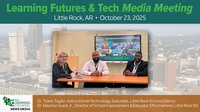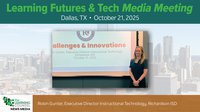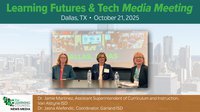When it comes to sales, I’ve been around the block so many times that the soles of my right shoe always wear out faster than my left. I have been accused of stalking by my prospects more than once, and instead of saying “Walk, Don’t Walk,” the traffic sign at my corner says “Sell, Don’t Sell.” In my 59 years on this earth, I’ve been wearing out shoe leather in one way or another for about 40 of those years.
In all that time, one thing I noticed has never changed. Almost every client I have ever had listened to the same radio station. And as unlikely as it sounds, I’ll bet dollars to donuts that every one of your prospects listens to the exact same station.
It’s that old favorite, WII-FM.
For those of you youngsters out there who have yet to fall victim to hundreds of sales training courses and seminars, WII-FM is short for “What’s In It For Me?” As radio stations go, it’s an oldie but a goodie.
If your company has the opportunity to sponsor education industry or nonprofit events, you may be granted a few minutes to speak. If you do, and you forget what station your prospects are listening to, they’ll probably tune you out.
I was at an education conference recently where that happened. The event sponsor’s representative came from an amazing EdTech Company. His company was innovative, proven successful through independent research, kids loved it and the districts that used his product saved buckets of money. In short, the presenter should have been a rock star and the audience should have been on the edge of their seats, hanging on his every word. Instead, they immediately tuned him out, talked among themselves and didn’t hear a word he said. Not even his jazzy PowerPoint presentation with its 39 colorful slides made a difference.
Out of politeness, I did watch his presentation and listened to his message. What I noticed from the start was that every sentence that came out of his mouth started with I, me or we. And each of his 39 colorful slides was about another of his company products, a company sales milestone or quotes from his own company’s management. He even had graphs charting his company’s growth over time. I felt so bad for the guy. I felt worse for his company who paid for the opportunity to sponsor the event. But mostly, I felt bad for our kids who might never benefit from this amazing tech that our salesperson was selling.
If your marketing plan includes sponsorship at conferences and events, please keep this in mind. Your audience listens to WII-FM. They don’t want to hear everything about your product and what it does. They don’t want to hear an endless list of features. They want to know what your product can do for their district or school. Show them the end result of using your tech. If you want to use the allotted five to 15 minutes well, help them visualize their staff, teachers or students using the product. Help them see the benefits to themselves. Show them the relevance. Talk about the joy of the parents whose children excelled at math or science or language arts for the first time. Get the audience involved in the conversation. Ask them questions and be interested in their answers. Talk to them, not at them. I guarantee if you tune into their favorite station, they’ll tune into you.
The opportunity to speak to a group of qualified decision-makers is a gift. Having a captive audience is a great way to create a buzz. A shared experience can be a very powerful thing – even more powerful than one-on-one conversations. In an article from the magazine Psychological Science, authors Erica J. Boothby, Margaret S. Clark and John A. Bargh said that shared experiences are amplified. “Sharing an experience with another person, without communicating, amplifies one’s experience. Both pleasant and unpleasant experiences were more intense when shared.” It’s why attending a concert or movie with other people is so much better. More intense. More memorable.
So, when you find yourself in front of a room full of prospects, don’t blow it. Use the time to create that shared experience. Help them understand what’s in it for them. Be the rock star you’ve always wanted to be. Knock their socks off. And leave the PowerPoint at home.
About the Author

Charles Sosnik is an education journalist and editor and serves as Editor in Chief for the Learning Counsel. He uses his deep roots in the education community to add context to the education narrative. He is a frequent writer and columnist for some of the most influential media in education, including The Learning Counsel, NSBA Journal, edCircuit, EdNews Daily and EdTech Digest. Charles is unabashedly Southern, and likes to say he is an editor by trade and Southern by the Grace of God.











